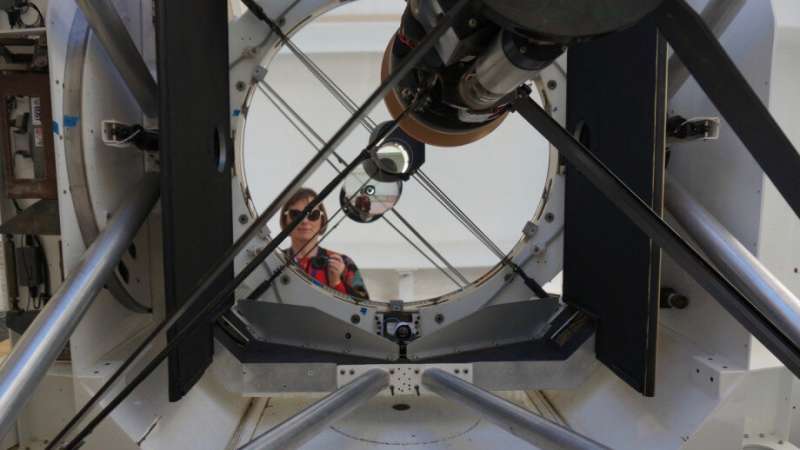In contrast, the new guide star laser, which is mounted on a telescope, propagates a visible orange beam into the night sky to create an artificial star that can be used to accurately measure light distortion between Earth and space.
This guiding orange light enables adaptive optics to sharpen images of space debris. It can also guide a second, more powerful infra-red laser beam through the atmosphere to precisely track space debris or even safely move them out of orbit to avoid collisions with other debris and eventually burn up in the atmosphere.
Lead researcher, Professor Celine D'Orgeville from ANU, says adaptive optics is like "removing the twinkle from the stars."
"But that's a good thing," Professor D'Orgeville said.
"Without adaptive optics, a telescope sees an object in space like a blob of light. This is because our atmosphere distorts the light traveling between the Earth and those objects.
"But with adaptive optics, these objects become easier to see and their images become a lot sharper. Essentially, adaptive optics cuts through the distortion in our atmosphere, making sure we can clearly see the incredible images our powerful telescopes capture.
"This includes small, human-made objects—like weather and communication satellites, or space junk.
"That's why this development is such an important breakthrough when it comes to our efforts to clear our night skies of the ever-increasing clutter of space debris."
The EOS guide star laser and the ANU adaptive optics systems are located at the ANU Mount Stromlo Observatory in Canberra, Australia.
The ANU researchers will now work with EOS to test the new technology and apply it to a range of other applications including laser communications between the Earth and space.
It's an exciting development that will help to safeguard the wide range of vital applications of space technology in the 21st century.
Explore further



